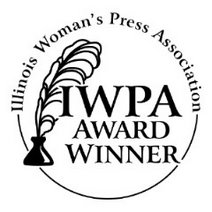 W. B. Yeats' Grave at Drumcliffe, Country Sligo
W. B. Yeats' Grave at Drumcliffe, Country Sligo A Misty Seaside Scene
A Misty Seaside SceneI visited Ireland this year because I'd heard it was a beautiful country and because I'd not been there. I'm not Irish, so I had no ancestors to trace there, no special ties except perhaps for those from my literary background. Jonathan Swift's "A Modest Proposal" (see my March 24 post) tied in with tales of the potato famine and the later "troubles" in Northern Ireland, and W.B. Yeats' grave in a country churchyard brought back memories of some of his poems. Our program director even read a few of his poems to us. I sat beside a statue of Oscar Wilde and saw the plaque on a Georgian house in Dublin where he lived for a while. I wished I'd brought a copy of James Joyce's Dubliners; his short story or short novel "The Dead" from that collection has long been a favorite of mine.
I won't attempt to write a travelogue or a travel guide to Ireland; both abound in book stores and on Amazon.com. Ireland is well worth visiting, and be sure to include a visit to Northern Ireland, now that things are peaceful there. I witnessed on Irish TV the historic formation of a Northern Ireland government at Stormont with the various factions in agreement and world leaders and politicians (including Ted Kennedy) in attendance. Where you go and what you see depend on your interests, and perhaps your wallet and your walking ability.
To me, Ireland meant the beauty of seaside vistas, stone walls, ruined stone cottages, old castles, music, dancing, poetry, leprechauns, legends, and the Blarney Stone. Now I've added mental pictures of booming economies (north and south), fierce national pride, and a desire to maintain peace. Some want a unified Ireland, some don't, but many seem to believe that it will happen eventually. The economy is booming, and housing prices are rising.
I found it interesting that the U.S., especially former president Bill Clinton and George Mitchell, is given considerable credit for influencing the peace process in 1990. The "Troubles," including an armed struggle for Catholic rights, began in the mid-1960's, and more than 3,500 lives were lost. As you can see from the wall painting above, we aren't universally loved in Ireland any more than we are in the rest of the world, but at least we've helped bring about peace in Northern Ireland.
Belfast is known as the place where the Titanic was built, and a Titanic museum is in the works. Belfast was a part of the Victorian industrial revolution, and was once known as the City of Inventors. The ship building industry has died there, except for one ship repair site.
Of course there's much more to see in Ireland. I saw castles, sheep, the bleak west coast areas to which many Irish were exhiled while the English took over the more productive land, lovely small towns, Blarney Castle and others. (No, I did not kiss the Blarney Stone. If something is "at the top of the tower," my knees don't take me there). The weather went from beautiful to rainy and back again, typical, I guess. I saw Waterford Crystal being made (I didn't buy any) and other examples of modernized but ancient industries at work. I'll let you know when my photo album is available on line. As usual, I took many, many high-resolution digital photos, and it takes time to get it all together.
In conclusion, do visit Ireland if you can. For us older folk, I highly recommend Grand Circle Travel's "Ireland in Depth" tour, but be sure to include the Northern Ireland pre-trip.
Copyright 2007 by Marlys Marshall Styne
Travel Photos by the Author



















No comments:
Post a Comment